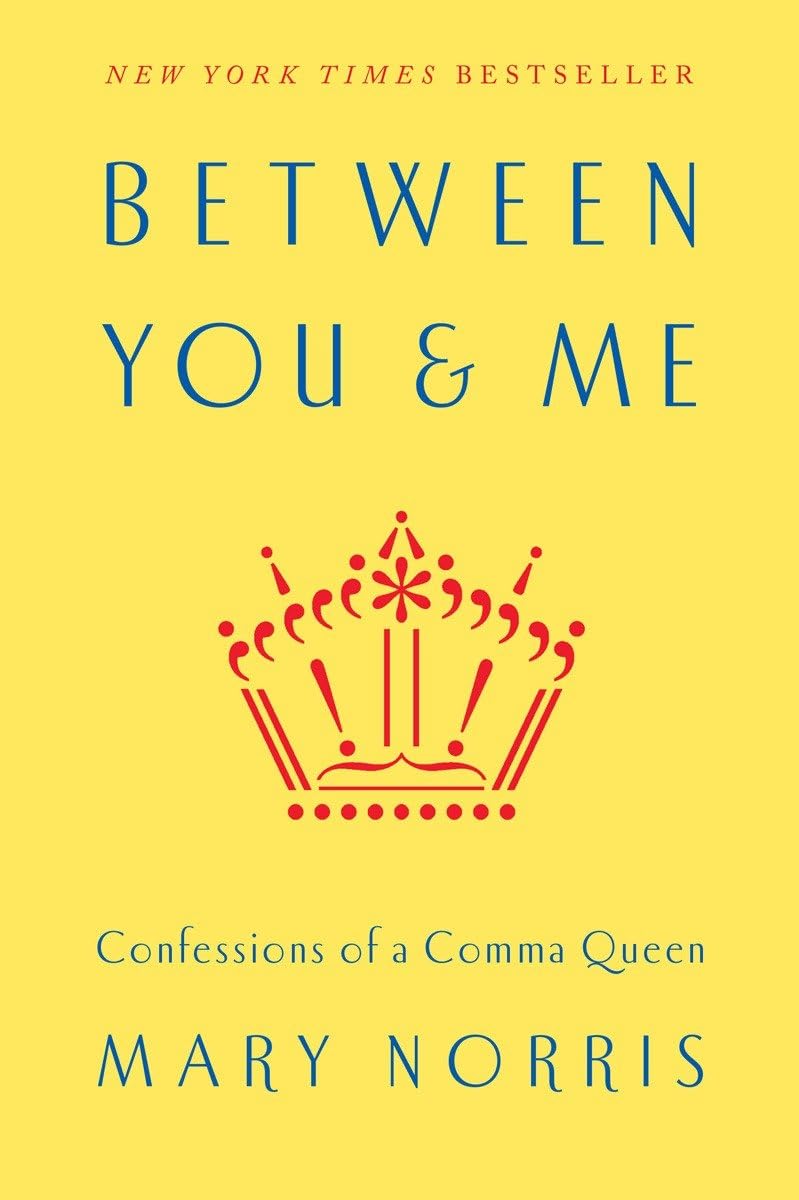markm reviewed Between you & me by Norris, Mary (Editor)
Review of 'Between you & me' on 'Goodreads'
3 stars
I got this used after it was removed from the Arapahoe Library District's shelves. It's a memoir with free included grammar and usage advice à la The New Yorker. The author has worked in the New Yorker copy department for more than 30 years.
Her advice includes:
When to use that or which …if the phrase or clause introduced by a relative pronoun — “that” or “which”— is essential to the meaning of the sentence, “that” is preferred, and it is not separated from its antecedent by a comma. p. 38
Chaise longue (French for long chair) not chaise lounge (both are shown in Webster’s presumably because the error is so common) p.45
Referring to ‘between you and I’.’Solecism’ is a fancy word for mistake. [I have confused it in the past with solipsism. This will help.] p. 79
Interesting uses of the comma. Dickens apparently inserted them between …
I got this used after it was removed from the Arapahoe Library District's shelves. It's a memoir with free included grammar and usage advice à la The New Yorker. The author has worked in the New Yorker copy department for more than 30 years.
Her advice includes:
When to use that or which …if the phrase or clause introduced by a relative pronoun — “that” or “which”— is essential to the meaning of the sentence, “that” is preferred, and it is not separated from its antecedent by a comma. p. 38
Chaise longue (French for long chair) not chaise lounge (both are shown in Webster’s presumably because the error is so common) p.45
Referring to ‘between you and I’.’Solecism’ is a fancy word for mistake. [I have confused it in the past with solipsism. This will help.] p. 79
Interesting uses of the comma. Dickens apparently inserted them between subject and predicate in a sentence as in: But what principally attracted the attention of Nicholas, was the old gentleman’s eye …. Grafted upon the quaintness and oddity of his appearance, was something so indescribably engaging … p. 96
In adjectives preceding a noun, if you can substitute “and” for a comma it belongs there. p. 105
A whole chapter on hyphens, entitled, “Who put the hyphen in Moby-Dick?” It's only in the title and not in at least some textual references to the whale.
An extensive discussion of semicolons, with the advice that what follows the semicolon should be able to stand as its own sentence — an independent clause. (followed by the exceptions) p. 142
Chapters on the apostrophe and obscenities finish things up.

